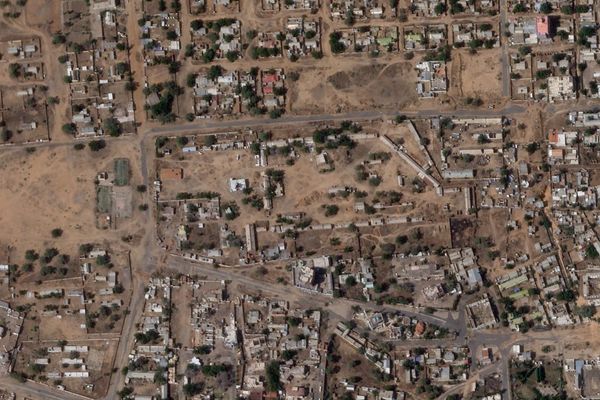
The most intense hurricane in Jamaica’s recorded history, Hurricane Melissa, just ripped the roof clean off of Sangster International Airport in Montego Bay. Newly released footage shows water absolutely gushing into the terminal like a catastrophic, indoor waterfall. It’s a terrifying look at the sheer power of this storm, which has been appropriately nicknamed “The Storm of the Century” by officials, and it shows you exactly why the entire island nation has been declared a disaster area.
You really have to see the video to believe it. This isn’t just a few leaks; the entire roof structure over a large section of the terminal building completely caved in, leaving a massive, open hole in the ceiling. First found by TMZ, the footage captures the moment when a torrent of rain, driven by those incredible winds, transformed the bustling airport terminal, the very space where families and vacationers once gathered to check in or wait for their flights, into a rapidly flooding zone.
The volume of water pouring down looks utterly surreal, and the ground level is completely swamped with debris and floodwater. The difference between how that terminal looked a few days ago and how it looks now feels like night and day, because hurricans are no joke.
Looks like that terminal will be closed
Hurricane Melissa made landfall in Jamaica on Tuesday as a Category 5 monster, packing maximum sustained winds of a jaw-dropping 185 MPH. To give you some perspective, those wind speeds actually tied records for the strongest Atlantic storm at landfall, putting it right up there with the deadly 1935 Labor Day hurricane. When a storm is that powerful, forecasters warn of “total structural failure,” which is exactly what we’re seeing happen to the airport and countless other buildings across the island. The sheer scale of the destruction is awful.
And on the other hand, it’s not just the speed of the wind that made this hurricane so devastating. Melissa was an exceptionally slow-moving storm, creeping along at speeds as low as 2 to 4 MPH. That disastrous combination of record-breaking intensity and agonizingly slow movement meant the island was pummeled for an extended period, compounding the damage in a way a fast-moving storm simply wouldn’t. The winds just kept crackdown hard on structures until they finally failed.
As a result, Jamaica’s infrastructure has taken a massive hit. Both of the country’s main international gateways, Sangster International in Montego Bay and Norman Manley International in Kingston, have been forced to close completely as officials attempt to assess the extent of the devastation. While damage assessments are ongoing, early reports paint a bleak picture, with multiple hospitals sustaining damage and hundreds of thousands of residents remaining without power. Imagine what a cat 6 would do.
The human cost is already tragic. According to initial reports, at least seven people have died across the Caribbean as a result of the storm, including three confirmed deaths in Jamaica, three in Haiti, and one in the Dominican Republic. That number is expected to rise as search and rescue teams gain access to the hardest-hit areas.







